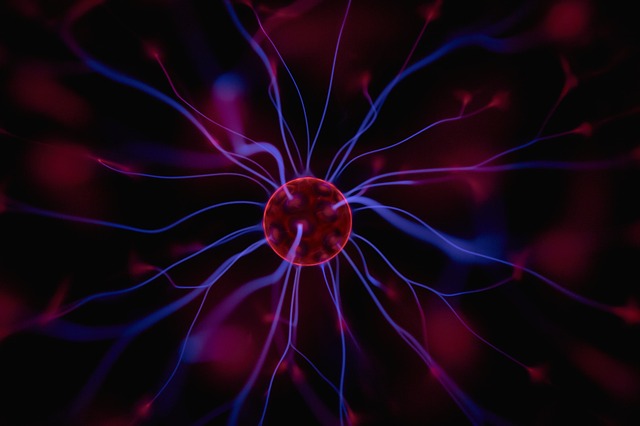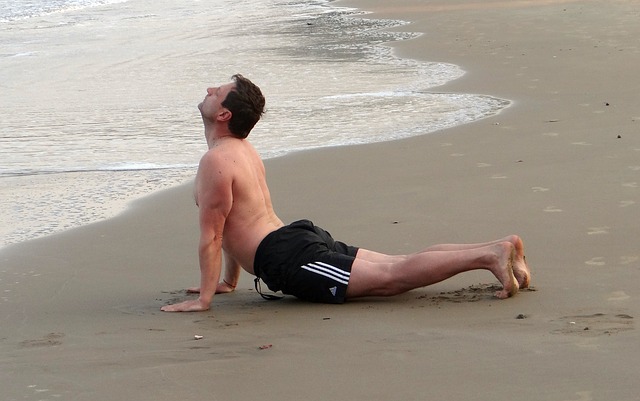
by Peter Winslow
For the better part of three centuries, Newtonian principles have dominated the worlds of science and academia. These principles and discoveries led to the discipline we call physics, and since the time of Newton himself, the physical sciences have been regarded as completely proven and verifiable.
In physics, the science of mechanics is divided into two primary fields of study; classical mechanics, which describes the set of laws that govern the motion of bodies under a verifiable system of forces; and quantum mechanics, which handles the wave particle dualities of molecular structures and their building blocks, the atoms. Atoms are made of curious particles which pay little or no attention to the established laws that govern the material universe. For example, researchers have observed time and again that electrons may appear in more than one place at a given time, an anomaly previously considered by physicists to be impossible.
This dichotomy in the schools of science has birthed a philosophical debate between the opposing viewpoints. For quantum researchers interested in documenting probabilities rather than absolutes, it’s a tall order. Searching for phantom particles that can be described as supernatural, discarnate, or metaphysical is often considered to be pseudo-science, anathema to the physical sciences.
Quantum physics is said to be not only stranger than you think, but stranger than you can think. The most brilliant minds among us, including Albert Einstein, have spent a century attempting to establish and explain a set of principles that oversee quantum mechanics, principles that as yet cannot be understood via the physical sciences fathered by Isaac Newton.
“Science is organized knowledge. Wisdom is organized life.”
— Immanuel Kant
Little known to the public at large is the fact that Einstein himself was ostracized and dismissed as a foolish and doddering old man by the establishment that once celebrated and enshrined him. Development of his principles had led to the dispatch of atomic weapons and the specter of the complete destruction of life on Earth, a probability which repulsed Einstein.
He dedicated the remaining decades of his life to the search for a Unified Field, his notion that everything in the universe, mechanical and quantum, must be subject to one elegant set of rules. He spent many years in the quest and his excursions led him beyond the physical sciences. From his pursuits came the string and superstring theories of unification, but Einstein died before finding his grail. As yet, a unifying “source of all” has not been conclusively identified by science.
Modern Western medicine is the beneficiary of classical mechanics. Indeed, medical research has produced many miraculous discoveries and developments; they’ve unlocked the structure of the cell, the chromosome and the gene, and corroborated how these microscopic elements determine outcomes in the organism at large. With diagnostic devices they can see into the vessels in the heart, observe the factories within our cells and follow the cryptic passageways that process information in the brain.
Yet science has been unable to identify or explain a source that underwrites the system, the “life force” that appears to permeate living tissue.
So, we are left to contemplate the source of energy that gives life to living beings. Is comprehension unavailable to science, unobtainable by the interests of medicine? Questions like this lead us back to the gaping rift between opposing schools of thought. The body and brain are material in nature, some insist, but what of the mind? Is it matter, energy, or perhaps an incorporation of both? At last, quantum mechanics has the answer.
Peter

by Peter Winslow
The medical field is rapidly transforming. It’s now more accepting of a more integrative approach to healthcare. Foundations, colleges and universities, research institutions, and the federal government are creating initiatives to explore, research and develop a new patient-driven approach to care.
Integrative medicine recognizes the importance of modern scientific treatment as well as the state of an individual’s mind and spirit. It encourages the patient to take a primary role in his or her own care, and integrates Western-based drug treatment with broader principles and therapeutic approaches to wellness.
Here’s just a few of the institutions working toward a new integrative approach:
Massachusetts General Hospital Benson-Henry Institute for Mind Body Medicine:
A scientific and educational organization dedicated to research, teaching, and the clinical application of mind-body medicine and its integration into all areas of health. Here you can read Dr. Benson’s story of how he began researching mind-body connection when he noticed that all patients had elevated blood pressure during regular check-ups. In one example from his research studies, monkeys that were trained to elevate their blood pressure through behavior consistently developed hypertension.
Mind & Life Institute
An organization “bridging dialogue and study between scientists with other philosophical practitioners, notably the Dalai Lama, in the interest of studying mind-body interactions, the nature of pain and suffering, and the cultivation of compassion to facilitate human advancement in growing, healing and regulation of emotions.” – Mind Life Institute
Alternative Medicine Foundation
The Foundation provides resource guides listing books, medical journals and treatment centers in alternative and complementary modalities such as acupuncture, ayurveda, mind-body medicine, and how to use such modalities in dealing with health issues such as aging, cancer, cardiovascular disease, and pain management.
University of Maryland’s Center for Integrative Medicine
A National Institutes of Health specialized center for research in integrative medicine, blending conventional and complementary medical approaches, addressing not only physical symptoms, but also psychological, social, environmental & spiritual aspects of health & illness. Read a summary of ongoing research projects conducted at the Center in areas such as the impact of therapies in wide range of physical illnesses and emotionally-based problems ranging from arthritis and back pain to addictions and overcoming emotional trauma.
The Center for Mind-Body Medicine
The Center is “working to facilitate the combination of modern science with the wisdom of the world’s healing traditions, to help health professionals heal themselves, their patients and clients, and their communities.” They promote scientifically proven techniques in self-awareness and self-expression through words, drawings, and movement, relaxation, meditation, exercise, diet, biofeedback, visual imagery, self-hypnosis, and group support. Led by James S. Gordon, MD, “a Harvard educated psychiatrist, a world-renowned expert in using mind-body medicine to heal depression, anxiety, and psychological trauma. He also recently served as Chairman of the White House Commission on Complementary and Alternative Medicine Policy and served as the first Chair of the Program Advisory Council of the National Institutes of Health’s Office of Alternative Medicine.” See a summary of the Center’s research studies.
National Center for Complementary and Alternative Medicine
The National Center for Complementary and Alternative Medicine (NCCAM) at the National Institutes of Health (NIH) (U.S. Department of Health & Human Services) is dedicated to exploring complementary and alternative healing practices “in the context of rigorous science, training complementary and alternative medicine (CAM) researchers, and disseminating authoritative information to the public and professionals.” See a summary of recently research studies and clinical trials.
The Bravewell Collaborative
The Collaborative works with prominent researchers, educators, philanthropists, and businesses dedicated to promoting advances in integrative medicine. Read an article from Bravewell about mind-body medicine. Read more from Bravewell about Integrative Medicine.
The Arizona Center for Integrative Medicine
The Arizona Center for Integrative Medicine “leads the transformation of healthcare by creating, educating and actively supporting a community that embodies the philosophy and practice of healing-oriented medicine, addressing mind, body and spirit.” Led by Andrew Weil, MD, Founder & Director, Professor of Medicine and Public Health, Jones-Lovell Endowed Chair in Integrative Rheumatology.
Duke Integrative Medicine
Duke University’s Integrative Medicine’s research is dedicated to “understanding the effectiveness and efficacy of new models of integrative, personalized health care to help transform the practice of medicine in the 21st century.”
The Integrative Medicine Service at Memorial Sloan-Kettering Cancer Center
The Center’s research and treatment approach “Integrates the discipline of modern science with the wisdom of ancient healing. It can transform the physical, emotional, and spiritual dimensions of the lives of people living with chronic or life-threatening illness. In concert with medical treatment, the Center promotes therapies such as touch therapies, mind-body therapies, acupuncture, nutrition, physical activity and fitness, and dietary supplements to help alleviate stress, reduce pain and anxiety, manage physical and emotional symptoms, and enhance quality of life.”
Johns Hopkins Center for Complimentary and Alternative Medicine (“CAM”)
The main scientific goals of the CAM Center are to study CAM interventions relative to cancer and concomitants, such as cancer pain. In the Johns Hopkins CAM Center proposal, “translational and clinical research project proposals are amalgamated to focus on treatments for certain types of cancer. reduce neuroendocrine stresses in breast cancer patients, to alleviate cancer pain, and to examine the activity of PC-SPES, an herbal preparation with eight components, in prostate cancer patients.”
The Johns Hopkins Medicine and Digestive Center
This center also studies and uses integrative medicine in treating various physical and emotional conditions. It uses nutrional counseling, accupuncture, massage, mind-body therapies, and counseling. Specifically, integrative Pychotherapy is used, combining traditional counseling with holistic approaches such as meditation, visual imagery and music therapy to create a healthy mind-body alliance.
Beth Israel Continuum Center for Health and Healing
The Center is an academic leader in integrative healthcare, research and education. There are several different sites with summaries of relevant research relating to mind-body therapies in several different areas:
Healing chronic disease
Healing chronic pain
Healing digestive order
Healing depression
There are more summaries on the website: Research on various modalities for treating chronic pain including acupuncture, exercise/movement therapies, healing arts, manual therapies, mind-body practices, and others.
Peter

by Peter Winslow
We all know that medical treatment for Ankylosing Spondylitis is limited. That’s why our doctors encourage us to develop habits that will help us to help ourselves.
Ankylosing Spondylitis is an inflammatory disease that most often affects tissues in and near the spinal column. Initially, sufferers experience lack of flexibility and range of motion; eventually, fusing of vertebrae can occur, creating a forward hunched posture and irreversible joint damage.
Yoga is a complementary treatment that can greatly help alleviate these and other symptoms of Ankylosing Spondylitis. Yoga increases flexibility and range of motion in the spine, helping to reverse the degenerative issues while improving physical strength and posture.
Yoga is a meditative form of exercise which eases emotional tension and stress while it promotes improvement in the physical tissues of the body. It increases range of motion, and decreases the pain and inflammation associated with Ankylosing Spondylitis.
Unfortunately, the pain of Ankylosing Spondylitis can leave you feeling like movement of any kind is the last thing you want to do. Yet if you resist motion and restrict movement as a means to avoid pain, you make the problem worse. By remaining sedentary, the symptoms intensify; tissues degenerate more rapidly and a stiffening and stagnation of these tissues creates more inflammation in the body, creating more and more chronic pain.
If you’re new to yoga as a complementary treatment, find a beginner’s class and get started. You don’t have to be flexible in order to begin; you will benefit from doing the gentle poses no matter what your current status or how advanced your condition.
The gentle movements of yoga are proven to reduce the pain and stiffness caused by inflammation surrounding the joints, as they increases oxygen and blood circulation to the inflamed areas. Increased oxygen and blood to the affected areas means more flexibility and less AS pain.
Peter

by Peter Winslow
“Although the world is full of suffering, it is also full of the overcoming of it.“
– Helen Keller
Hello –
It’s been a while since we’ve connected, yet you have never been far from my thoughts.
Every day I grapple with the knowledge that you are out there, fighting the good fight, doing what you can to cope, and persevering in the face of daunting adversity. If only I could ease your burden and deliver freedom from the struggle with AS, the world would be a better place.
A better life, a better world, a new awakening… that is the fervent hope for us all. In order to prevail, we must understand and use the most powerful ally we have – absolute and unshakable faith.
Faith is taking the first step even when you don’t see the whole staircase. – Martin Luther King Jr
Faith is an unstoppable force that moves mountains and changes lives. History is replete with examples of people from every walk of life – people like you and me – who have accomplished the unimaginable through the power of their irrepressible faith.
When my own symptoms were intolerable, I found relief in remaining convinced that a brighter day was sure to come. My daily focus reflected it, and my mantra became:
This too shall pass…
…which gave me the strength and the inner resolve I needed to rise up and meet the challenges of life with chronic pain.
Repeat these words of wisdom often, believe in them, and never give in: This too shall pass.
There is unlimited potential for scientific breakthroughs and personal miracles, all that we could ever want and hope for, which may appear at any moment. Who are we to deny it?
Faith in the power to prevail is the key to all victory. Since time immemorial, wiser men than me have encouraged us to take heart and never stop believing in ourselves and our dreams. Choose to believe that you will one day awaken to a better world and a better life, and have faith.
There is a powerful message in this quote by Rachel Naomi Remen:
Healing may not be so much about getting better, as about letting go of everything that isn’t you – all of the expectations, all of the beliefs – and becoming who you are.
When you understand this, heed it and really take action, everything in your life can improve. New opportunities and experiences appear, and what you really want will then come into view. It all begins with you, and what you focus on.
Trust your most powerful ally, and always keep the faith.
Peter
by Peter Winslow
Here is a puzzler you may find amusing. See if you have the answer:
- You can’t fake it, but you can certainly hide it.
- When you show it, everyone wants it.
- You can’t buy or sell it, yet it is truly priceless.
Got it? If you need a little more to go on, most people have chimed in with answers like love, wisdom, and happiness. Some come to conclusions like integrity, compassion, character, honor, dignity, passion, altruism, and more along these lines.
So, who is correct?
It seems to me that everyone is. And what do all their inferences have in common? We could say that they all demonstrate the qualities of what can be called our “inner beauty.”
There’s been a lot of talk in the media lately about inner beauty. There’s even a TV program that entertains its audience by lampooning the stunningly gorgeous contestants for their apparent lack of “true beauty.” More and more, our so-called inner beauty seems to have gone missing, and it’s become a fad to make sport of those who possess precious little of it.
So, what is inner beauty, and more to the point – do you have it?
We may agree that everyone is potentially beautiful on the inside, and yet finding the beauty within ourselves can pose a colossal challenge. Begin here: you have met people who seem to be overflowing with gratitude, poise, charm and other qualities of “inner beauty.” What was it about them that you admired?
This is a significant question when you understand a very profound axiom: we are only able to recognize in others that which we ourselves possess.
This means that at some level of being, you are no different than those you admire. If you were, then you could not recognize what you admire in them. What you find so attractive about them is a direct reflection of your own inner beauty.
Information like this will shatter your old self-image with its criticisms, aspersions and fears, and lay the groundwork for a new way to interpret the world in which you live.
As inner beauty develops, your life experiences begin to change in profound and meaningful ways. Gone is the wretched “life story” of a fear-filled, shameful, insecure and deeply flawed human being huddled under the damning glare of a harsh and judgmental inner critic.
What displaces such tyranny is the most wonderful and useful asset in the world: the light of unconditional love.
As your inner light shines into the people you meet, you actually appear more radiant on the outside. You begin to look and feel healthier, happier, more vibrant and alive, brimming with passion and substance.
You become magnetically attractive, and the reward is much more than you had imagined. It includes communion with the very source of life itself, and the ability to bring authentic love into the world. People then recognize their own inner beauty reflected in you, and that, my friend, is a definition of true love: the recognition of oneself in another.
Things begin to occur as you would have them—from the most important virtue to the least significant event. As you become more loving and giving, healthy and fit, happy and confident, you are effortlessly blessed with true self-esteem, truly loving relationships, and a harmonious environment in which to live.
You stand at the threshold of an epic adventure which leads to the very heart and soul of your being. This is where logic and magic meet, deep within you, a luminous place of true inner beauty.
Peter

by Peter Winslow
Creative imagery means using your imagination to create what you want. There is nothing new or unusual about it; in fact, everyone uses visualization and imagery every minute of every day. It is the ability to have an idea or create a mental picture in your mind.
Most people use it in a relatively unconscious way. Because of deep-seated fears and negative emotions, many people dwell on their problems and limitations without realizing it. Others expect and anticipate positive experiences in life and generally create these results for themselves. What makes the difference?
The conscious use of creative imagery means understanding the natural principles that govern the workings of your mind and using these principles in a productive way.
If you had never seen a beautiful and awe-inspiring sunset and someone tried to describe one to you, it might seem outlandish or miraculous. Once you saw a few for yourself and learned about the natural laws involved, it would then seem normal. This is an example of the power of visualization.
What at first might seem improbable or even impossible becomes practical and understandable when we practice imagery and visualization in a positive way.
When creating anything, we begin with a thought or idea about what we want. The idea is the blueprint that precedes what we actually experience. “I think I’ll have lunch” is the thought that comes before the meal; “I need a job” is a thought that can eventually lead to one.
The same mental principles operate when we do not take direct action to manifest the idea. Simply holding an idea or thought in your mind tends to lead in the direction of that which you dwell on. If you constantly think about illness, you’ll probably make yourself sick; if you truly believe you have inner beauty, you’ll develop more of it.
Peter





